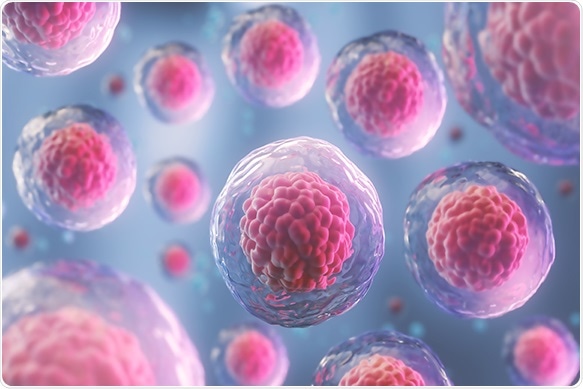Spinal cord injury research is progressing with the development of new hybrid biomaterials that promote repair and regeneration following spinal cord injury. While a complete cure for paralysis caused by spinal cord injury is still elusive, treatments are being developed to prevent additional injuries and irreversible damage.
The focus of research is on understanding the mechanisms of injury, secondary consequences of spinal cord injury, and finding ways to improve recovery and wellness for individuals with spinal cord injuries or diseases. Funding from organizations like the National Institute of Neurological Disorders and Stroke (NINDS) and the Congressionally Directed Medical Research Programs (CDMRP) supports ongoing research in this field.

Credit: www.news-medical.net
Understanding Spinal Cord Injury
Spinal cord injury (SCI) refers to damage in any part of the spinal cord, which is responsible for transmitting signals from the brain to the rest of the body. The impacts of SCI on the body can be devastating, potentially leading to paralysis, loss of sensation, and other physical impairments.
Treatment options for SCI vary, ranging from surgical interventions to rehabilitative therapies. Currently, there is ongoing research in the field of spinal cord injury, aiming to understand the underlying mechanisms and develop innovative approaches for treatment. Recent advancements include the development of hybrid biomaterials that promote repair and regeneration of the spinal cord.
While a complete cure for SCI is not yet available, progress has been made in terms of axon regeneration and partial repairs. The ultimate goal of spinal cord injury research is to improve the quality of life for individuals affected by SCI and enhance their functional capabilities.
Current Landscape Of Spinal Cord Injury Research
Breakthroughs in spinal cord injury research have shown promise in potentially curing paralysis. Ongoing research efforts aim to understand and develop new treatments for this debilitating condition. One exciting development in this field is the use of hybrid biomaterials, such as nanoparticles, to promote repair and regeneration after spinal cord injury.
Scientists in Austin, Texas and other research centers are actively working on developing these novel materials. While a complete cure for spinal cord injuries remains elusive, progress has been made in the basic science of axon regeneration, paving the way for treatments that can partially repair spinal injuries.
Additionally, treatment options focus on preventing further damage and helping individuals with spinal cord injuries live better lives. With continued research and advancements, the goal of fully repairing spinal cord injuries may become a reality in the future.
Recent Discoveries And Advancements
New hybrid biomaterials have been developed to promote repair and regeneration of the spinal cord after injury. These biomaterials, in the form of nanoparticles, build on existing practices in tissue engineering. Researchers have successfully synthesized these materials to enhance the healing process in spinal cord injuries.
The progress in the field of axon regeneration has also shown promise in partially repairing spinal injuries. Although a full repair is still elusive, advancements in the science of spinal cord injury research are leading to treatments that could help prevent additional damage and irreversible harm.
Mayo Clinic’s Spinal Cord Injury Research Program is actively studying recovery, secondary complications, and overall wellness for individuals with spinal cord injuries or diseases. By understanding injury mechanisms and the body’s reactions, researchers are working towards finding solutions for improving spinal cord health.
Frequently Asked Questions For Spinal Cord Injury Research
What Is The New Research For Spinal Cord Injury?
New research on spinal cord injury involves the development of unique biomaterials to promote repair and regeneration.
How Close Are We To Curing Paralysis?
Progress has been made, but a cure for paralysis is not yet available.
Will Spinal Cord Injuries Ever Be Curable?
While a spinal cord injury cannot be cured, treatment can help prevent further damage and additional injuries.
How Close Are We To Repairing Spinal Cord Injuries?
Significant progress has been made in the basic science of axon regeneration, bringing us closer to partially repairing spinal cord injuries. However, a full repair of spinal injuries is still not achievable.
Conclusion
In the ever-evolving field of spinal cord injury research, groundbreaking advancements have opened up new possibilities for the future. Researchers have developed innovative biomaterials that promote repair and regeneration following spinal cord injury, offering hope for those affected by this debilitating condition.
While a full repair of spinal injury remains elusive, progress has been made in the basic science of axon regeneration, bringing partial repair treatments closer to reality. Moreover, treatment options exist to prevent additional injuries and irreversible damage to the spinal cord.
Organizations like the Spinal Cord Injury Research Program at Mayo Clinic and the National Institute of Neurological Disorders and Stroke are continuously funding and supporting research in this area. As we gain more insights into the injury mechanisms and understand the cascade of reactions that occur in the body, the potential for further advancements is vast.
With each new study and clinical trial, we move closer to improving the lives of individuals with spinal cord injuries and bringing us closer to a future where paralysis is no longer an insurmountable obstacle.
